PsoriasisIt is a chronic disease that affects the skin, sometimes the nails, joints and internal organs. This is manifested by itching and the appearance of pink - red rashes - papules that can unite into larger plaques. These papules rise above the surface of the skin. It is covered with silvery scales that peel off easily when peeled.

The disease is often combined with impotence, accelerated ejaculation and Reiter syndrome. Extensive psoriasis can cause psoriatic arthritis.
Risk factors
Causes of psoriasmrnot yet fully identified. Risk factors for developing the disease include:
- microbial factor - different types of fungi, mycoplasma;
- neuropsychiatric trauma, stress;
- endocrine diseases - diabetes, thyroid disease;
- foci of chronic infection, especially streptococcus;
- immunodeficiency conditions;
- disorders of lipid and protein metabolism;
- skin and joint injuries.
Can psoriasis be transmitted?
Psoriasis is not contagious. Many researchers pay attention to the familial nature of psoriasis and recognize its genetic nature. Moreover, it is not the disease itself that is inherited, but a predisposition to it.
If you get any of these symptoms, talk to your doctor. Do not self-medicate - dangerous to your health!
Symptoms of psoriasis
The first symptoms of psoriasis are:rashes on the skin in the form of light pink plaques with a scaly surface. Plaques are single, rising above the level of healthy skin, found in the elbows and popliteal cavities.
More often, psoriatic plaques appear on the skin of the knee, elbow, chest, abdomen, back, and scalp, but as the disease progresses, they can also appear on any other, most unexpected site of the skin.
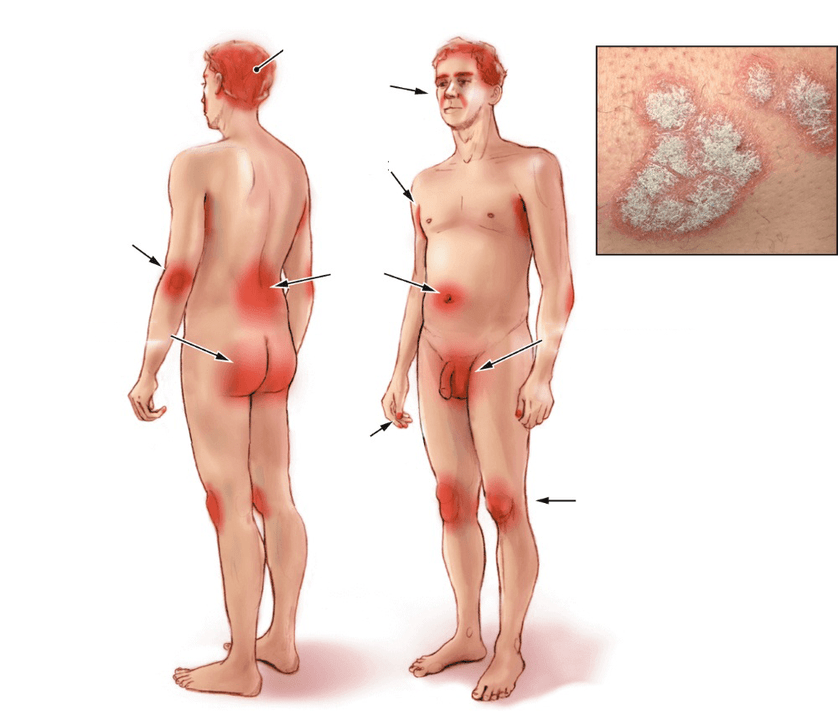
Initially, the papules are small - 3-5 mm, the color is light pink. They gradually increase in size, are covered with silvery scales, and melt into larger formations called plaques.
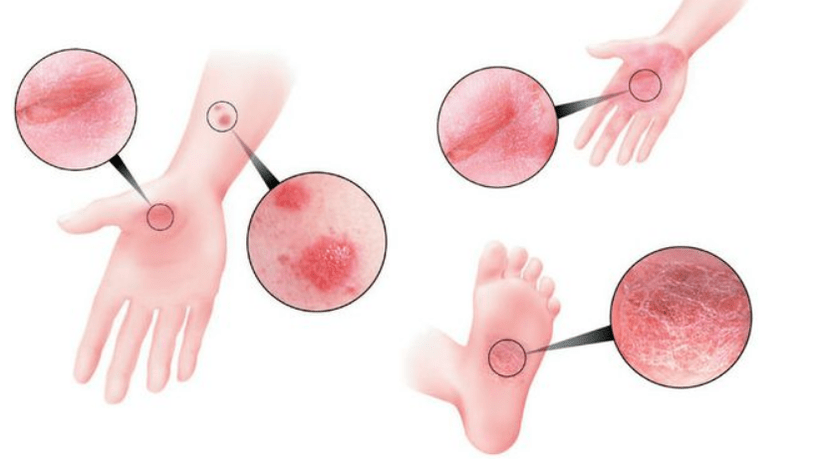
The fresh elements of the papules are usually bright in color, all the way to red, the "old ones" are paler. In the initial stages of psoriasis, the edges of the papules do not peel off. They represent a hyperemic boundary -growth rate. . .

The hallmark of psoriasis is the Auspitz triad. This triple can be observed by scraping the surface of the papule with a sharp object. It involves three phenomena:
- stearinfol phenomenon- layering of a large number of silver-white scales which are easily separated when scraped;
- psoriasis movie symptoms- detached surface with a pungent layer which opens after peeling the lower layers of the stratum corneum;
- blood dew phenomenon- exposure to superficial capillaries in the form of small bloodstains after removal of the psoriasis film.
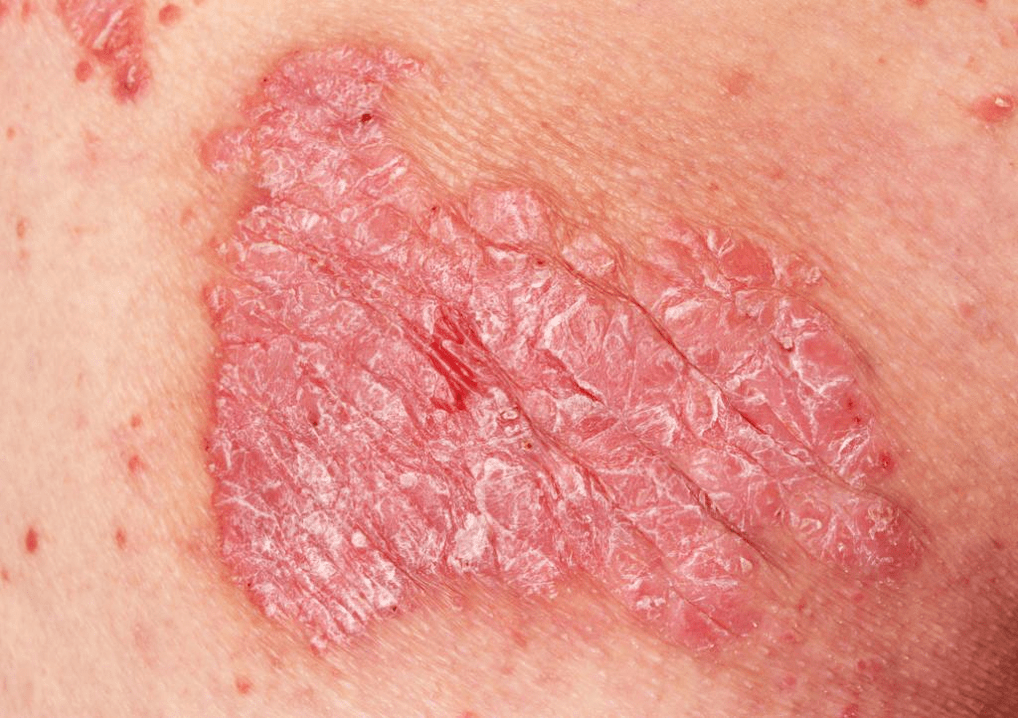
Signs of different types of psoriasis
Clinical types of psoriasis:
- Spotty psoriasis- pale pink with poorly infiltrating spots. It resembles toxidermia.
- Irritated psoriasis- due to aggressive environmental factors (sunlight, cold, warm) and exposure of irritating drugs to the skin. The color of the plaque becomes more intense, its size increases, it rises more above the surface of the skin, a belt is formed on the edges in the form of redness.
- Seborrheic psoriasis- often develops in patients with seborrhea. The clinical picture is very similar to seborrheic eczema.
- Exudative psoriasis- occurs quite often. This is due to excessive secretion of inflammatory fluid - secretions. It impregnates the accumulation of scales and turns them into scales.
- Psoriasis of the palms and soles- or represented by common plaques and papules, or hyperkeratotic formations similar to calluses and calluses.
- Follicular psoriasis- a rare form of the disease. The rash consists of white miliary nodules with a funnel-shaped recess in the middle.
- Psoriasis of the mucous membranes- a rare form of the disease. It occurs on the mucous membranes of the mouth and bladder. It appears as greyish-white areas with red borders.

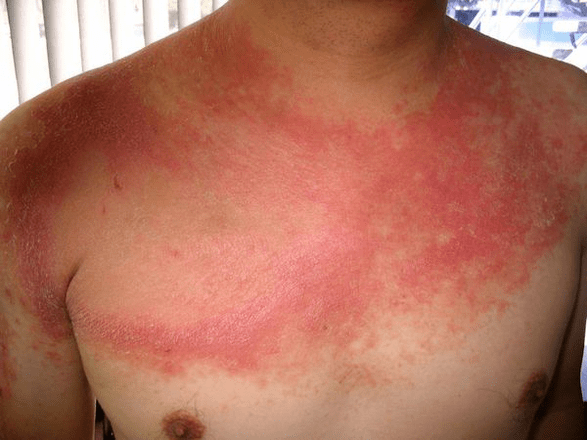
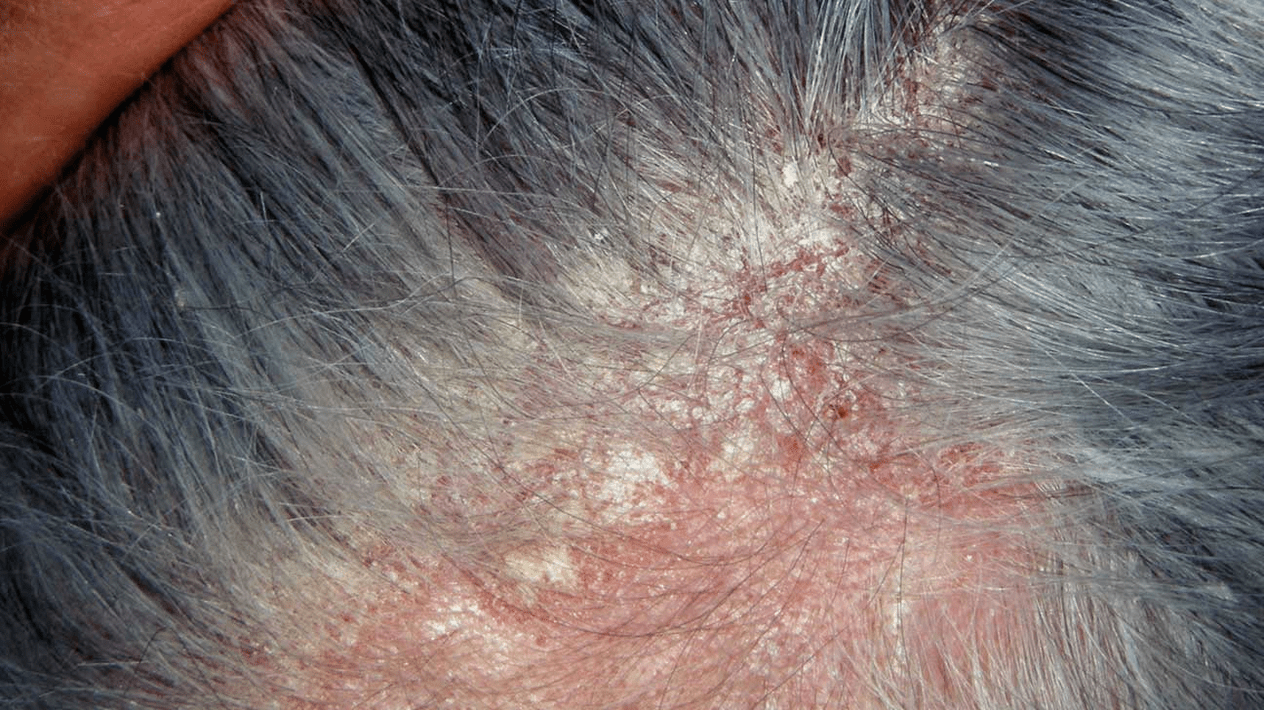
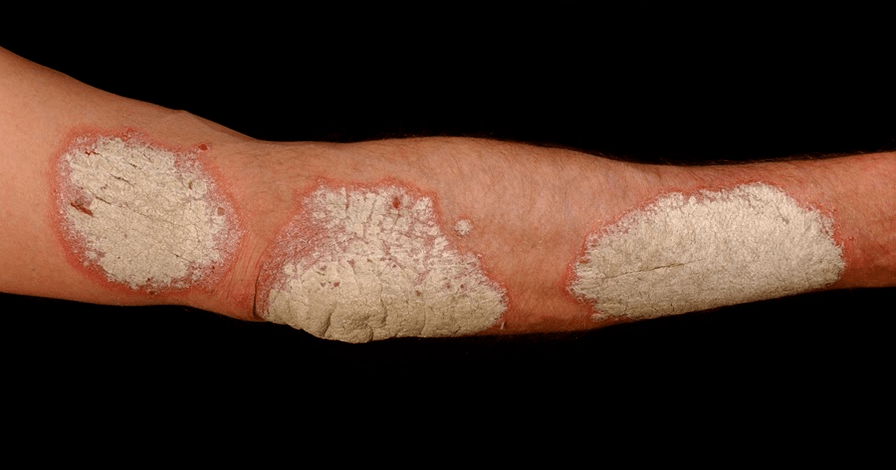


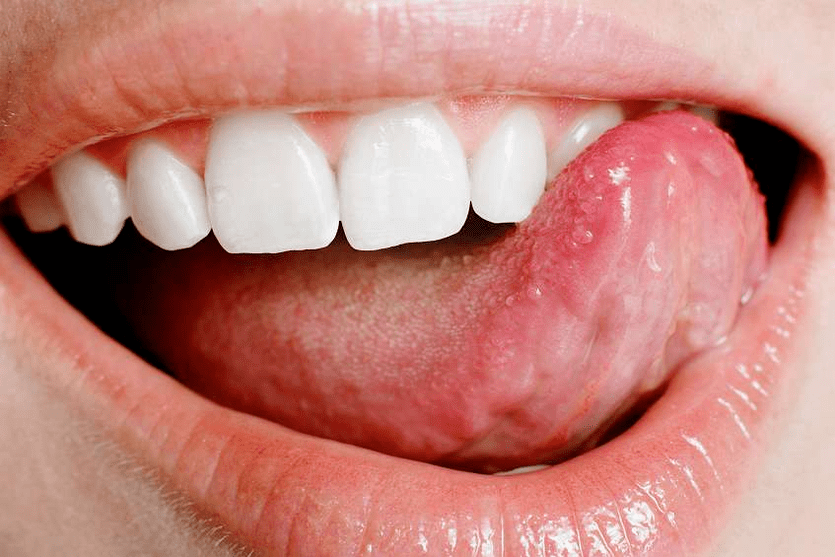
Frequency of psoriatic manifestations
Psoriasis is characterized by cyclic exacerbations. They are most common in the fall and spring.
Pathogenesis of psoriasis
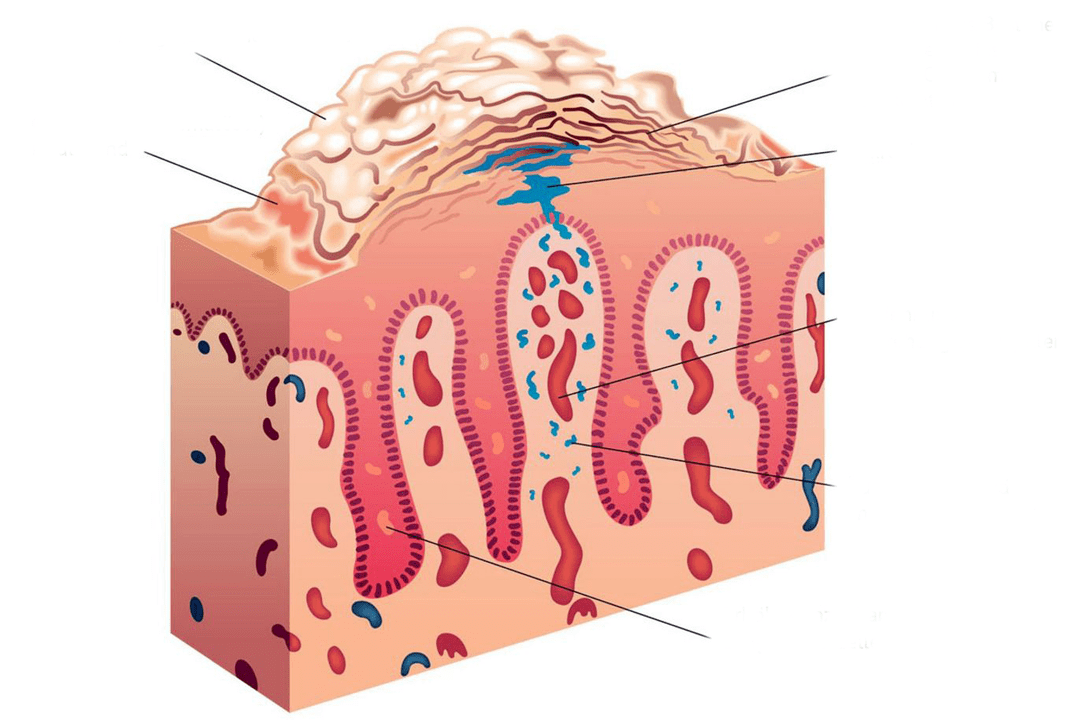
Dermatosis is an inflammatory process associated with the work of immune T cells. As a result of this inflammation, the proliferation of keratinocytes, the main cells of the epidermis, is accelerated.
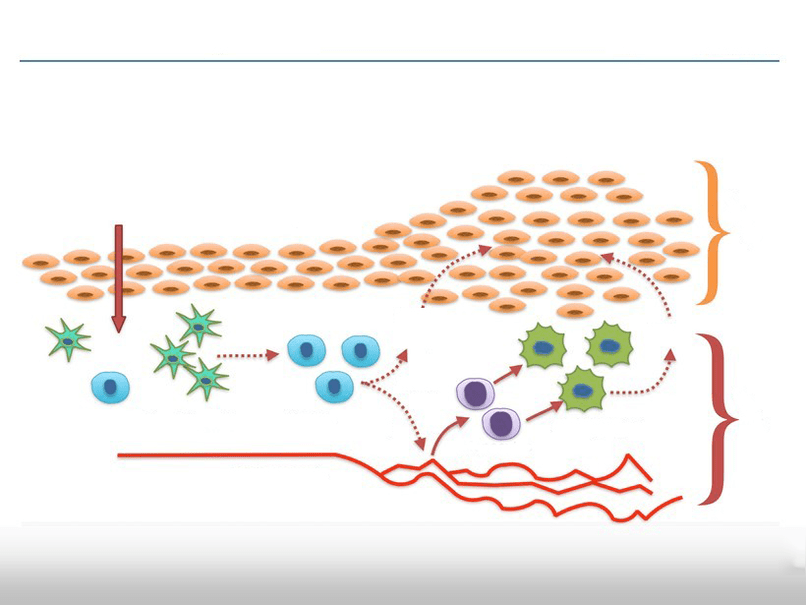
Psoriasis, a type of dermatosis, is a chronic inflammatory disease. It continues with the participation of microbial pathogens that can bind to the surface of the skin.
Everything that happens in the skin under the influence of the pathogen is a classic inflammatory reaction according to the principle of RTCDF:
- Rubor - redness;
- Tumor - tuberculosis, edema;
- Calories - fever, fever;
- Dolor - pain;
- Functia laesa - dysfunction.
Reddening and thickening of the skin at the site of the lesion, itching, increased keratinization, and then the formation of scales - all manifestations of the inflammatory process, a protective reaction of the body aimed at combating the microbial pathogen. Without timely outside help, the body often suffers defeat.
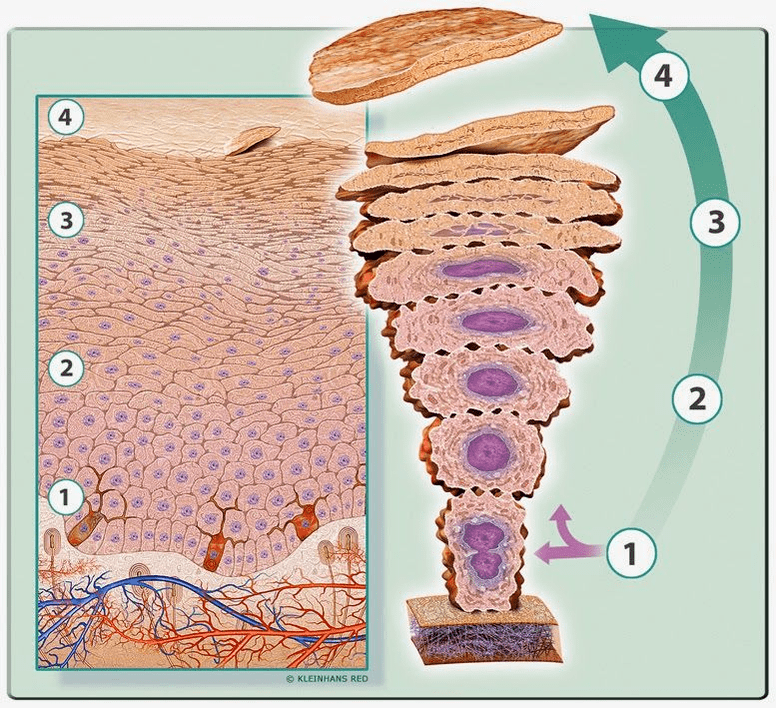
Some scientists insist on the theory of genetic predisposition to disrupt the process of cell division. Such a violation results in increased cell death and keratinization, followed by their growth and the appearance of a large number of incompletely keratinized epithelial cells. But this theory does not contradict the above microbes in the least.
Classification and developmental stages of psoriasis
There is no generally accepted classification for psoriasis.
Traditionallythere are four types of the disease:
- vulgar psoriasis - seborrheic, follicular, warty, exudative, bullous, palmar and plantar psoriasis, mucosal psoriasis;
- pustular psoriasis;
- psoriatic erythroderma;
- psoriatic arthritis.
According to ICD-10, they are:
- L40. 0 Psoriasis vulgaris (coin and plaque psoriasis);
- L40. 1 Generalized pustular psoriasis (impetigo herpetiformis, Tsumbusch's disease);
- L40. 2 Persistent acrodermatitis;
- L40. 3 Palmar and plantar pustulosis;
- L40. 4 Psoriasis tears;
- L40. 5 Arthropathic psoriasis;
- L40. 8 Other psoriasis;
- L40. 9 Psoriasis, unspecified
Complications of psoriasis
Without timely and competent treatment, psoriasis has a negative effect on vital organs and systems: the joints, heart, kidneys, and nervous system. These conditions can lead to disability and even death.
What is psoriatic arthritis
Psoriatic arthritis is the most severe form of psoriasis as it often causes disability.
Doctors are most often faced with this complication. It occurs due to inflammatory changes in the joints.


The joints of the hands, wrists, legs, and knees are the most sensitive. Over time, the disease can spread to the hip, shoulder and spine joints. With further progress, the muscles begin to ache near the affected joints. Patients complain of stiffness of movement, especially in the morning. Their body temperature often rises throughout the day.
The clinical picture of psoriatic arthritis develops in the usual way of arthritis: first pain, then swelling, stiffness and limited mobility. The characteristic symptom of this complication is the sausage finger. It appears due to the defeat of all interphalangeal surfaces.
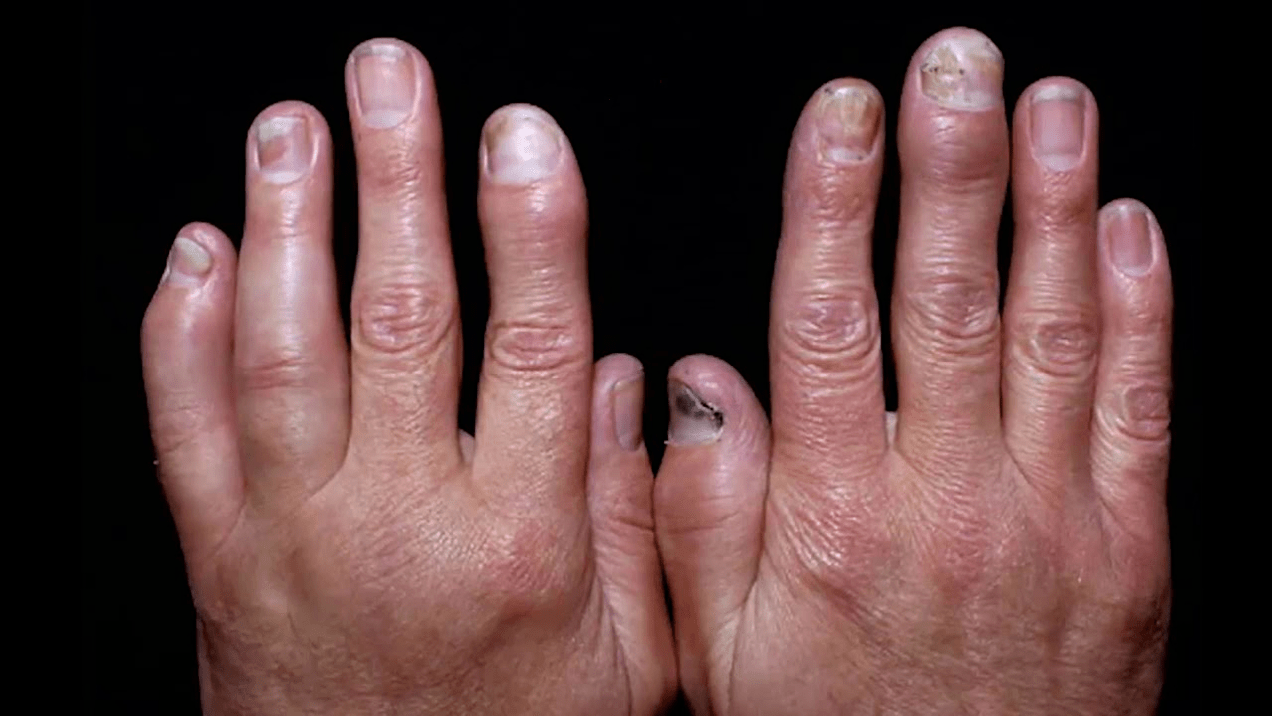
Other complications of psoriasis
A little less commonpsoriatic erythroderma. . .This condition occurs when the skin is completely affected. Patients are concerned about itching and burning, abundant exfoliation of dead tissue, and a strong reaction of the skin to changes in temperature.
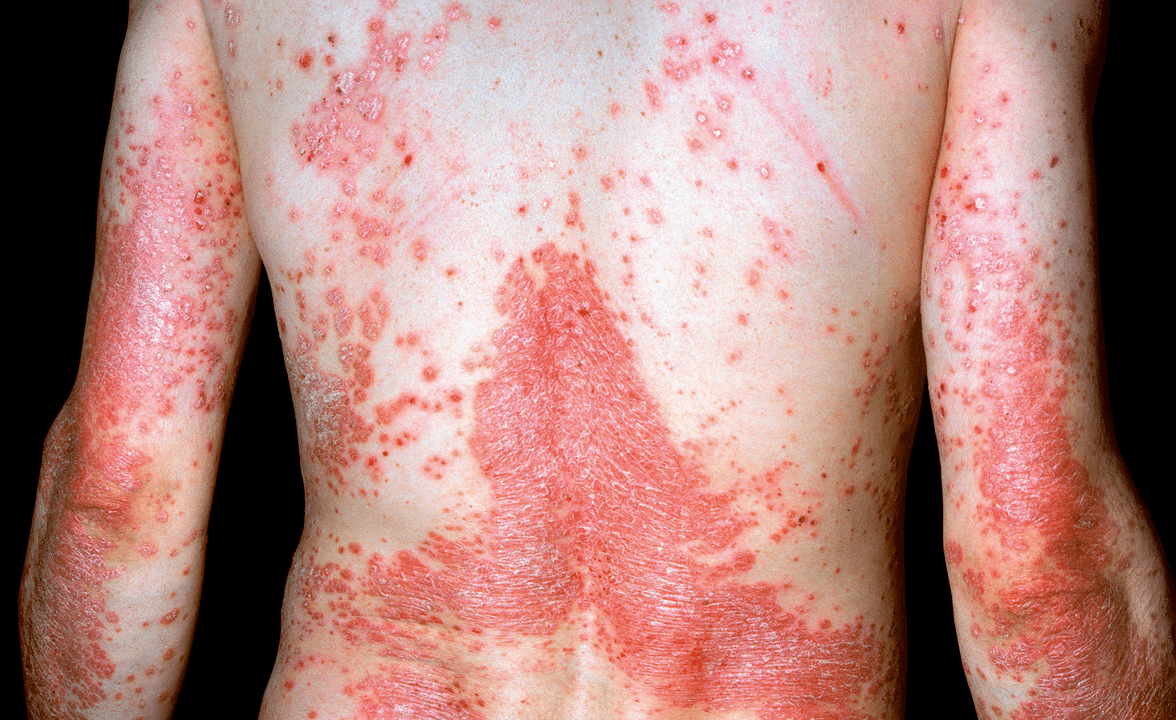
The next most common occurrencepustular psoriasis. . .This complication involves the addition of a secondary infection, staphylococci and streptococci. Clinically, pustular psoriasis is associated with the appearance of pustules - buckwheat grain-sized pustules. Pustules appear in different places. They rise above the surface of the skin, characterized by rapid growth and a tendency to unite. Existing symptoms are associated with high fever and signs of severe poisoning.
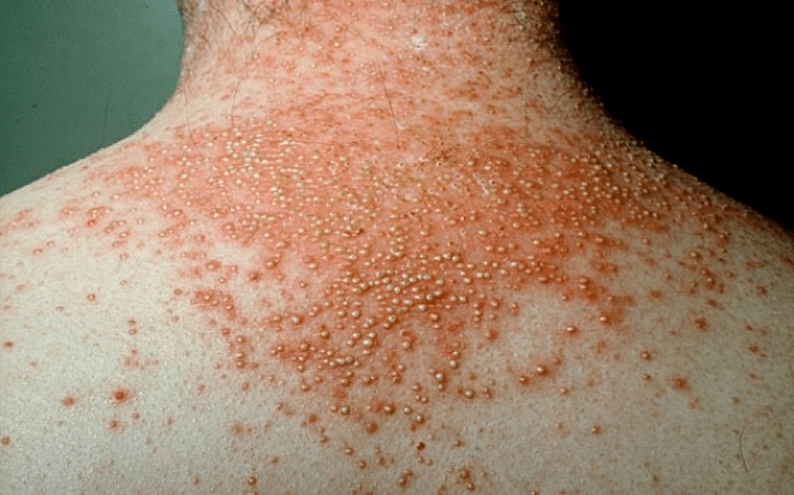
Injuries to internal organspsoriasis is extremely rare today. In general, people who follow an social social lifestyle are sensitive to them. The urinary system is more commonly affected: the mucous membranes of the kidneys, bladder, and urethra. This leads to pyelonephritis, glomerulonephritis, cystitis and urethritis.
On the part of the heart, psoriasis can damage the mitral valves, cause inflammation in the heart muscle and the outer lining of the heart - myocarditis and pericarditis. With damage to the nervous system, patients complain of creeping sensations, increased irritability or depression, constant fatigue, drowsiness, and apathy.
Diagnosis of psoriasis
When to see a doctor
It is necessary to consult a doctor for the first symptoms of psoriasis: the appearance of bright pink plaques on the skin, with a flaky surface.
Preparing for a doctor's visit
You should stop applying medicated ointments to your skin three days before visiting your doctor. No other special training is required.
Psoriasis is such a recognizable disease that it will not be difficult to diagnose based on external signs. Patients can often be diagnosed, as they say, "out of the box. "If necessary, the doctor scratches the surface of the skin to recognize the Auspitz triad.
OV Terletskiy, Candidate of Medicine, and his co-authors proposed a diagnostic scheme based on data from the American Rheumatology Association. It includes the following tests:
- complete blood count (with platelets);
- general urine test;
- blood chemistry;
- acute phase reactions of the body - C-reactive protein and rheumatoid factor;
- immunoglobulins - IgA, IgG, IgM, IgE)
- reaction of complement binding with gonococcal and chlamydial antigen;
- the Wright and Heddelson reactions;
- coagulogram - assessment of blood clotting;
- blood test for borreliosis and toxoplasmosis (as indicated);
- blood test for HLA.
However, there are a number of diseases under the guise of psoriasis. Behavior becomes necessary in this regarddifferential diagnosis, especially papular syphilis, Reiter's syndrome, neurodermatitis, lichen rosacea, systemic lupus erythematosus, and seborrheic eczema. Use for this purpose:
- biopsy - pinching of a piece of skin with subsequent histological examination;
- laboratory diagnostics - often used to distinguish between psoriasis and papular syphilis;
- blood tests for other latent infections to better select antibiotics.
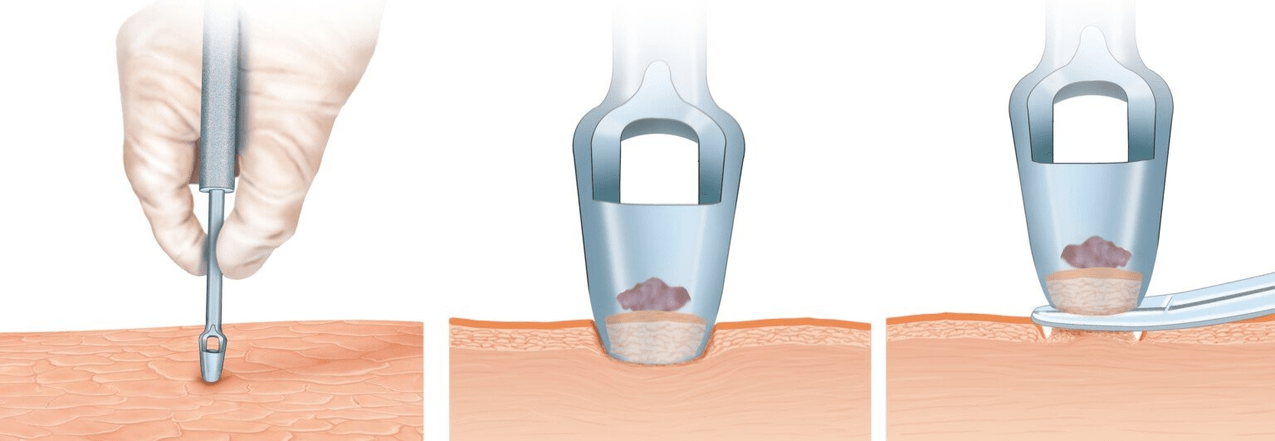
Instrumental diagnostic methodsit is mainly used for complex forms of psoriasis involving damage to joints and internal organs. These include: x-rays of the joints, ultrasound of the heart, kidneys, and bladder.
Psoriasis treatment
Is There An Effective Treatment For Psoriasis
Even though psoriasis is a permanently recurring disease, it can be completely eradicated provided you consult a dermatologist in a timely manner who can identify the real causes of psoriasis. Over the past decade, a number of systemic and topical drugs have emerged aimed at eliminating the cause and suppressing the mechanism of disease development. Drugs that interact with each other using chemical signals (cytokines) have worked very well. They eliminate the increased proliferation of skin creatinocytes.
Phototherapy
In 1994, the team of the Dermatology Department of MAPO SPb presented a method for the treatment of psoriasisUFO blood- photomodification of blood with ultraviolet light.
The ability of sunlight to have a beneficial effect on the skin in many diseases, including psoriasis, has been known since ancient times. In the early twentieth century, a group of German scientists suggested that because ultraviolet light has a healing effect on exposed skin, this effect is likely to occur when ultraviolet radiation is applied to the blood. After all, it’s also a kind of fabric. This assumption was confirmed by the first meeting of UV radiation in the blood held in Germany in 1924.
The therapeutic effect of ultraviolet rays on blood is linked at the molecular-atomic level to deep structural changes that are immobilized by immunocompetent organs — liver, spleen, bone marrow, and lymphoid tissue. These changes are seen by the organs as an alarm signal, so they produce ten times more immune complexes. In this case, ultraviolet light is a kind of "whip" that forces the body to dramatically increase its defenses in the fight against the disease.
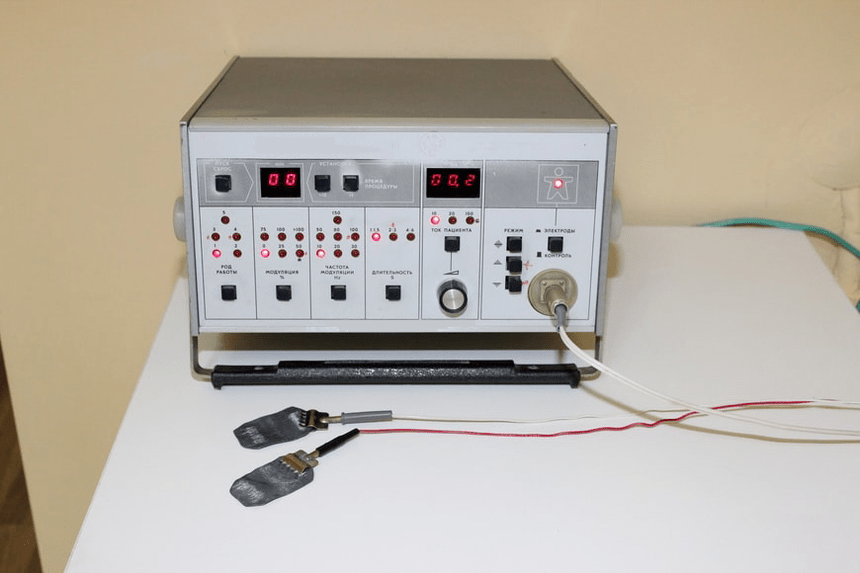
It is also worth noting the effect of PT -unlined ultraviolet therapy. . . This method of treatment is important given the chronic nature of psoriasis, which is associated with a number of internal organ complications caused by various microbial pathogens. The longer the microbes are in the body, the wider their habitat will be. These microscopic creatures capture more and more anatomical areas through the flow of blood and lymph. Once in the tissues, they try to penetrate the intercellular spaces as deeply as possible. There, they form microcolonies that are protected by the remains of dead, dead cells and the leukocyte shaft. Because of this, microorganisms have not been available with antibiotics for years. They easily compensate for the lack of nutrients when they enter a state of suspended animation - something between life and death.
The ability of ultraviolet rays helps destroy microbial "shelters. "They create favorable conditions for the penetration of antibiotics and other drugs that affect the cause of psoriasis.
The application of ultraviolet radiation to the skin is also relevant. The most famous method of treatment is using this principlePUVA therapy. . . Although less effective than ultraviolet irradiation of the blood. The therapeutic effect does not last long, a relapse may occur two weeks after the end of treatment.
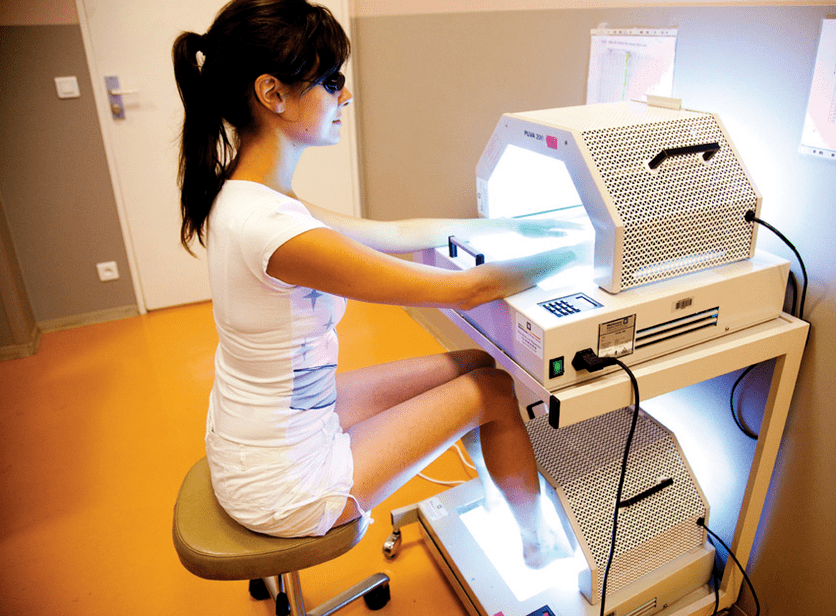
Drug treatment
Of the drugs, the following worked well:
- derivatives of vitamin A that reduce the maturation rate of keratinocytes and normalize cell differentiation;
- immunosuppressants that reduce the activity of T lymphocytes, which contribute to the division of epidermal cells;
- drugs for the treatment of malignancies that inhibit the proliferation and growth of atypical skin cells.
What ointments and creams are effective in treating psoriasis
Ointments and creams containing anti-inflammatory ingredients help alleviate the patient's condition.
How to treat scalp psoriasis
Ointments are not effective in treating scalp psoriasis. In addition to medication and ultraviolet treatment, a special shampoo can also be used.
How to treat psoriasis on the elbows and arms
Psoriasis on the elbows and arms is treated in the same ways as the rest of the body. The peculiarity of the course of psoriasis in this area is that the skin of the hands is exposed to physical, mechanical and chemical effects, which is an aggravating factor during the disease.
Is monoclonal antibody treatment effective in psoriasis?
Psoriasis monoclonal antibody therapy is very effective. Monoclonal antibody drugs are antibodies produced in the laboratory that are similar to those produced by human immune cells. Monoclonal antibodies selectively target targets responsible for the development of the disease.
How to recognize and treat psoriasis in children
In children, psoriasis often progresses more violently and is disguised as other diseases (eczema, erysipelas, herpes), which makes diagnosis difficult. Methods of therapy are similar to adults: phototherapy, medication, and topical treatment.
What baths to take with psoriasis
Aloe baths can reduce inflammation and itching.
How to treat psoriasis according to Pegano
The Pegano method for treating psoriasis includes bowel cleansing, diet and herbal teas. The efficacy of this method has not been demonstrated in clinical trials.
The role of nutrition in treatment
Nutrition greatly influences the course of psoriasis. Alcohol, salty, spicy, pickled, nuts, citrus, honey, chocolate and smoked meats should be excluded during treatment.
Which sanatoriums show rest to treat psoriasis
In the case of psoriasis, the treatment is more advantageous if it is carried out at sea in a region with a warm, dry climate and many sunny days. The resorts of the Crimea are best suited for this.
Folk methods
Some folk remedies can relieve itching and peeling of the skin in patients with mild to moderate psoriasis. These methods are:
- cream with aloe extract;
- fish oil with a coated dressing applied to the skin for six hours a day for four weeks;
- cream with oregon grape extract.
Forecast. Prevention
Psoriasis is not a sentence. If the patient has sought professional help in a timely manner from a professional who will determine the true causes of the disease and prescribe effective treatment, the disease can be overcome.
The simple form of psoriasis is manifested only by skin imperfections. Therefore, the patient does not need special conditions for work. The exception is work in a chemical plant: in this case, being at work must be excluded.
It is worth noting that psoriasis can cause complications. Most commonly, psoriatic arthritis develops. Its severe forms can limit the performance of work tasks and can lead to total disability in the future.
The prevention of psoriasis is an integral part of therapeutic measures to eradicate one of the most serious skin diseases. After recovery, the patient should completely review their lifestyle, eliminate bad habits, pay attention to the treatment of chronic diseases of other organs, adjust their diet, incorporate outdoor walks and sports into their daily routine.
Are they taking psoriasis in the military?
Severe forms of psoriasis are sufficient to declare conscripts unfit for military service, mild forms - with limited fitness.























